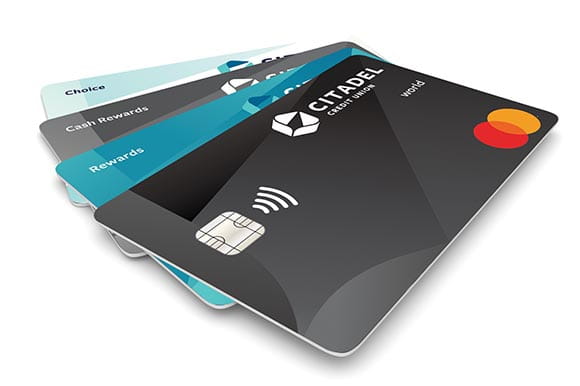How to Choose a Credit Card

If you don’t currently have a credit card, you are in a small minority. Statistics from the American Banking Association show there were 537 million credit card accounts in the United States at the beginning of 2022, up 6% — or 31 million — since the beginning of 2021. According to Experian, the average American has 3.84 credit cards with an average credit limit of $30,365.
Americans’ total credit card balance is $887 billion in the second quarter of 2022, according to the latest consumer debt data from the Federal Reserve Bank of New York. That’s a $46 billion jump from $841 billion in the first quarter of 2022.
The national average for credit card debt is $6,569. Pennsylvania ranks 19th, with an average debt of $6,527, slightly lower than Delaware at 13th with $6,736, and significantly lower than New Jersey, ranking 1st in the nation with an average of $7,872 in debt per card holder.
All this to say that credit cards play a significant role in the financial lives of most Americans. Deciding which card to pick, though, can be a challenge, especially with so many options on the market. Here are a few easy steps to help you select the right credit card for you.
Step 1: Know Your Credit Score
Your credit score is major factor in determining what credit cards you are eligible to choose from, as well as your potential credit limit. Lower credit scores can mean lower credit limits or even outright rejection. Or you may only be eligible for secured credit cards, which require the borrower to place a corresponding cash deposit with the issuing bank as collateral.
If you discover you have a low credit score, your first step is to stage a credit comeback before you choose a card. The good news is that getting a credit card, even with a lower limit, can help you build your credit score if you handle it responsibly.
Before you choose a credit card, however, be sure you understand the obligations and potential pitfalls. For example, it is very risky to simply pay the minimum required amount every month. Interest rates on credit cards can be very high, and those fees add up. Whenever possible, pay your credit card bill off in full each month.
Step 2: Narrow Down the Type of Credit Card You Want
Which type is best for you will depend on your individual financial situation and personal priorities. In general, credit cards can be divided into three different types:
- Credit-building or credit-improving cards
- Interest-saving cards
- Rewards-based cards
Credit-building or credit-improving cards include secured credit cards, which are useful for establishing a new credit history and or rebuilding a lower credit score.
Cards with 0% balance transfers and lower annual percentage rates (APRs) will help cardholders save on interest costs by transferring from a higher-interest rate card. Our Choice Mastercard is a good example of a card that offers a low interest rate, no balance transfer fee, and no annual fees.
If you want to make the most of your credit card spending, one of our Rewards cards is a great option.
- Our Cash Rewards Mastercard allows you to earn 1.5% cash back on your purchases
- Our World Mastercard allows frequent travelers to earn extra points on hotels, airlines, and restaurants

Step 3: Understand Your Spending and Payment Habits
It is important to be realistic about your own money habits. If you know that having a credit card with a high credit limit will only encourage you to spend more spending, choose a card with a lower limit. If paying off your full balance every month is not something you can realistically do, then the type of card you choose should vary accordingly.
If any of these bad spending habits sound familiar, getting them under control before applying for another credit card can go a long way toward securing your financial future.
Creating—and sticking to—a budget will give you a clear picture of where your money is going every month and help you determine out how a credit card will figure into your larger financial situation. Do you need another credit card in the mix, or would you be better off resolving some issues first?
If you do decide a credit card would be helpful, look at what you’ll be using the card for most and consider the features and rewards that fit your finances. Where will the rewards have the biggest impact on your monthly budget? For instance, if you know that you’ll be able to pay off your credit card debt at the end of every month, then a low interest rate isn’t that important, and a rewards card makes more sense. But if you know that you won’t be able to pay off your entire balance regularly, a low interest rate is much more important.
Step 4: Read the Fine Print–Especially on Fees and Penalties
You may not like reading the fine print, but that’s where you’ll find essential information on things like fees and charges that can influence your decision on which credit card to choose. These disclosures will tell you everything you need to know about transaction fees, balance transfer fees, asking for credit limit increases, and more. While they may seem minor, these fees can and do add up over time and it’s important to be aware of them.
Once you sign the credit card agreement, you’re responsible for the terms and conditions that apply to that card. If you don’t fully understand something, or you have questions, ask. A reputable credit lender will take the time to answer your questions and explain anything you’re unsure of.
Another thing to watch for is introductory low or zero interest rates that spike once the initial period is over. This applies to rewards-based cards as well. All reward and cash-back programs come with their own restrictions listed in the terms and conditions, so make sure you read those carefully.
Get Ready to Apply
Once you’ve determined that you’re ready to apply for a new credit card, get ready to apply. Citadel offers a variety of credit card options, from low interest cards to cash-back and rewards cards to best suit your needs. You can even apply online!
